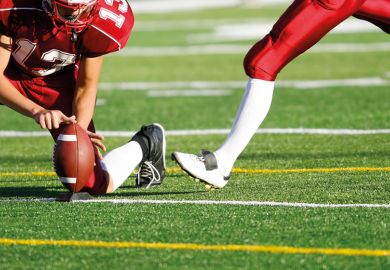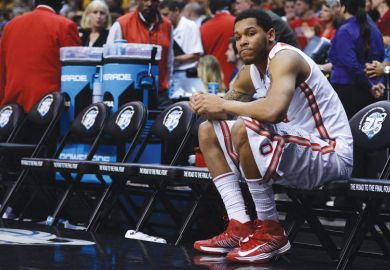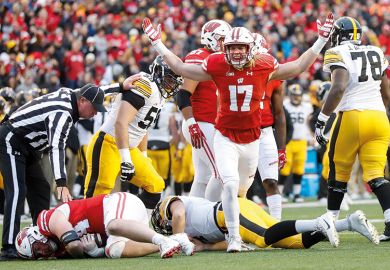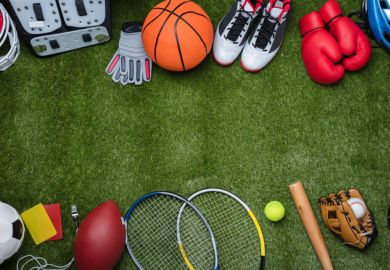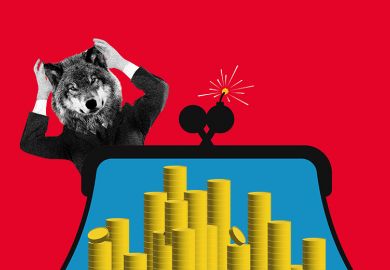The ongoing tug-of-war over college athletes’ status in US universities took another significant turn recently when the General Counsel of the National Labor Relations Board (NLRB) issued a memorandum stating that they should be treated as statutory employees under the National Labor Relations Act (NLRA).
College athletes bring in millions of dollars for their institutions and the National Collegiate Athletics Association (NCAA), the main governing body of US college sports, mostly via television contracts, but their student status has traditionally required them to play on a strictly amateur basis.
However, amid mounting opposition from student athletes, that façade began to crack in 2014, when a federal judge struck down rules that kept current and former student athletes from being paid for their image rights in video games, provided that their earnings were kept in trust funds until they graduate. And in June of this year, the Supreme Court upheld earlier rulings that banned limits on education-related benefits for athletes, such as computers or paid internships, amid fierce resistance from the NCAA.
Now, college athletes are set to receive all rights and protections under federal labour laws, including the right to unionise, strike, protest and walk out. This will probably result in increased litigation and organising activity involving student athletes at both private and public institutions, along with broader protections for employee conduct beyond that formerly protected by labour law.
This is a much more aggressive position than the NLRB has previously taken on the issue. In a 2015 case in which Northwestern University’s football players who receive scholarships sought recognition as employees, the board avoided the question of whether student athletes could organise into a union and bargain with their school, conference or even the NCAA itself.
This is because the board could not assert jurisdiction over college athletes without first having decided whether students were considered university employees in any capacity. That issue was addressed in 2016, when the NLRB found that graduate student assistants at Columbia University were employees under the Act.
This memorandum takes that approach even further. It very specifically says that the board views all references to college players as “student-athletes” as a purposeful misclassification under the NLRA because the term purportedly misleads college players to believe that they lack statutory protections. Now, NLRB regions are instructed to pursue action against any institution that uses this misclassification, holding them strictly liable.
The document references the Supreme Court’s recent ruling on amateurism and emphasises Justice Brett Kavanaugh’s concurring opinion suggesting that collective bargaining could be appropriate for college athletes. It also notes the NCAA’s suspension in June of its name, image and likeness (NIL) rules, which opened the door for players at academic institutions to be compensated more in line with professional athletes.
So how should universities respond?
Importantly, they should consider the upside and downside of unionisation. The athletes gain a seat at the table, but may lose their power to make individual arrangements, as unions tend to be “one size fits all.” Universities would face higher costs generally, less discretion in their own programmes, and a slower pace of change. The upside could be antitrust lawsuit immunity, as well as higher morale among athletes, which could enhance recruitment and retention.
Universities also need to think about how they would engage with college athletes who are organising or thinking of organising. Long-standing labour law rules prohibit threatening or coercing student athletes who are involved with unions; this includes asking athletes directly if they support unionisation. And while colleges are used to keeping a close eye on what happens on their campuses, surveillance during potential organising activities is unlawful.
But there are things universities can lawfully do. Leaders should be encouraged to share their personal views on why a union may or may not be the best approach for student athletes at their school. They should also preemptively review policies and issues that would typically be part of an athletic union negotiation. These include revenue shares, salary caps, NIL (names, images or likeness) rights, post-graduation rights, frequency of games or practices, team rules, Title IX issues, travel arrangements, number of free tickets to games, commercial sponsorship, and due process rights for the athletic programme’s rule violations.
From a compensation perspective, most unions looking to represent college athletes will seek to eliminate existing restrictions or expand opportunities for athletes to cash in on their image rights and enhance their personal brands. Colleges and universities should think through compensation models, including revenue sharing between athletes and schools. They can also study professional sports unions, which are likely to serve as inspiration for most college unions.
As of right now, this movement is still in its early stages. But proactive institutions can get ahead of what could be a revolutionary transformation in student athletics by thoughtfully examining and then potentially changing policies regarding student athletes.
Harry I. Johnson, III is co-practice group leader of labour/management relations at Morgan, Lewis & Bockius LLP and a former member of the NLRB. Nicole Buffalano is a partner at Morgan, Lewis & Bockius and was a board attorney with the NLRB in the New York and West Los Angeles regional offices.
Register to continue
Why register?
- Registration is free and only takes a moment
- Once registered, you can read 3 articles a month
- Sign up for our newsletter
Subscribe
Or subscribe for unlimited access to:
- Unlimited access to news, views, insights & reviews
- Digital editions
- Digital access to THE’s university and college rankings analysis
Already registered or a current subscriber?

